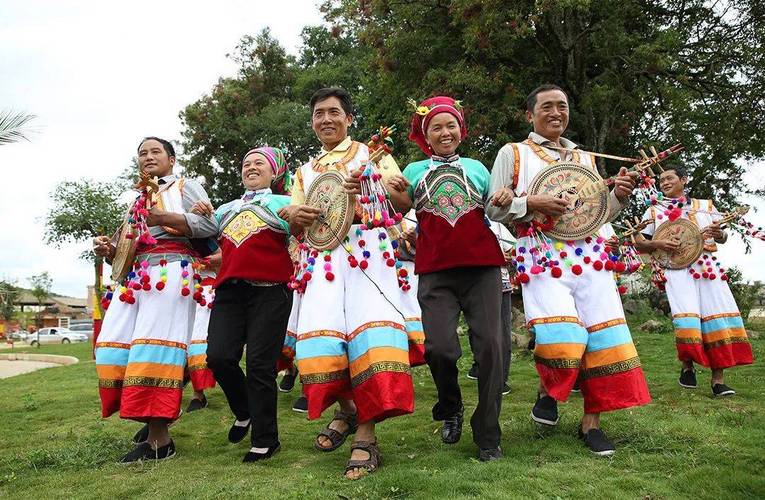
Weixin County Overview
Basic information
Chineses name: 威信
Location: In the northeast of Yunnan and northwest of Zhaotong
Language: Southwestern Mandarin - Yunnan Dialect
Population:385,865
Nationalities: Han, Yi, Miao, Hui
Area: 1400 square kilometers
Zip code: 657900
Area code: 0870
Geographical Location
Weixin County (威信县) is located in Zhaotong prefecture-level city, the junction area of Yunnan, Guizhou and Sichuan province, China. It Borders on Xuyong , Guling county of Sichuan province in the east, Bijie county in the south, connected with Zhenxiong county, bordering Junljian and Yiliang county in the west, connected with Gongxian, Xingwen county of Sichuan province in the north. The county town Zhaxi is 680KM away from Kunming, 286 KM from Zhaotong, 359 KM from Chongqing, 420 KM from Chengdu and 200 KM from Luzhou, Yibin and Zigong. It stretches 36.6 kilometers from north to south and 57 kilometers from east to west. The land area is 1400 square kilometers with its’ population of 420 thousand.
Introduction
In 1934, Weixin county was first established by the governor of the Republic of China, and in July 1950, Weixin county was liberated and set government. During the period of long march, Chinese Communist Party held a famous conference named “Zhaxi Meeting”. The government had built the Memorial Hall of Zhaxi Meeting to memorize the meeting. Weixin county is a typical mountainous county, the inhabitants develop agriculture rely on corn, rice and tobacco. It owns the character that subordinates to Yunnan province, ecology flow towards Sichuan province and closely linked with the developed area in middle and lower Yangtze river.
History
Weixin County, during the Xia and Shang dynasties, was the land of Liangzhou and Zhangzhou Prefecture. In the West Han Dynasty, it was under the Jianwei Prefecture.From the Han Dynasty to Qing Dynasty, it belonged to Nanguang County Zhuti Prefecture, Kaibian County Nanning Prefecture, Yixi Prefecture, and in Qing Dynasty, it belonged to Yunnan departed from Sichuan Province.
Administrative Division
There are 7 towns and 3 townships in Weixin county of Zhaotong: Zhaxi town(扎西镇), Jiucheng town(旧城镇), Luobu town(罗布镇),Linfeng town(麟凤镇), Miaogou town(庙沟镇), Shuitian town(水田镇), Changan town(长安镇), Shuanghe township(双河乡), Gaotian town(高田乡) and Santao township(三桃乡).
Ethnic Groups
There are 26 different ethnic groups inhabit in Weixin county, among them, Yi, Zhuang, Miao and Hui ethnic minorities are dominant. These ethnic groups are vital parts of Weixin county.
Climate
Weixin county belongs to subtropical monsoon climate. The annual average temperature is 13.3℃, and the annual average sunshine reaches 1033 hours, and the precipitation ranges from 900-1100 mm per year. The characteristics of this kind of climate list as below: the difference between seasons is not sharp but the diversity on vertical is obvious, short in summer and long in winter, not very hot in summer nor serve cold in winter, but warm in spring and autumn and so on.
Best time to visit
People can go to Weixin at any time, but it is better to go in Spring, Summer and Winter. The weather is good to visit the attractions and people can enjoy different views.
Transportation
Weixin county has a convenient transportation system, the county’s road system is being completed. Long-distance bus is the main way for local people who want to travel afar, and there are also taxi, bus and minibus. Most citizens have a motorbike while some people prefer bike.
Dining
Weixin county(威信县) is rich in snacks and local dishes. Lies in the northeast part of Yunnan province, the eating pattern of Weixin people is deeply influenced by Sichuan cuisine, however, in the long process of developing and communicating, Weixin people has formed their own eating habits and local cuisine.
Top Attractions
There are some Weixin county attractions for you to visit such as Houfang Village of Shuanghe Town, Shibazi Village of Gaotian Town, Shuanghe Miao and Yi Ethnic Town, Tianxing Forest Park, Tiantaishan Cave, Daxueshan Primitive Forest, Bo People Hanging Coffin of Washi Village, Guandoushan Stone Carving, Zhaxi Mausoleum of Red Army Martyrs, Memorial Hall of Zhaxi Conference.

 7 Days GolfingTour
7 Days GolfingTour
 8 Days Group Tour
8 Days Group Tour
 8 Days Yunnan Tour
8 Days Yunnan Tour
 7 Days Shangri La Hiking
7 Days Shangri La Hiking
 11 Days Yunnan Tour
11 Days Yunnan Tour
 6 Days Yuanyang Terraces
6 Days Yuanyang Terraces
 11 Days Yunnan Tour
11 Days Yunnan Tour
 8 Days South Yunnan
8 Days South Yunnan
 7 Days Tea Tour
7 Days Tea Tour
 8 Days Muslim Tour
8 Days Muslim Tour
 12 Days Self-Driving
12 Days Self-Driving
 4 Days Haba Climbing
4 Days Haba Climbing
 Tiger Leaping Gorge
Tiger Leaping Gorge
 Stone Forest
Stone Forest
 Yunnan-Tibet
Yunnan-Tibet
 Hani Rice Terraces
Hani Rice Terraces
 Kunming
Kunming
 Lijiang
Lijiang
 Shangri-la
Shangri-la
 Dali
Dali
 XishuangBanna
XishuangBanna
 Honghe
Honghe
 Kunming
Kunming
 Lijiang
Lijiang
 Shangri-la
Shangri-la
 Yuanyang Rice Terraces
Yuanyang Rice Terraces
 Nujiang
Nujiang
 XishuangBanna
XishuangBanna
 Spring City Golf
Spring City Golf
 Snow Mountain Golf
Snow Mountain Golf
 Stone Mountain Golf
Stone Mountain Golf





